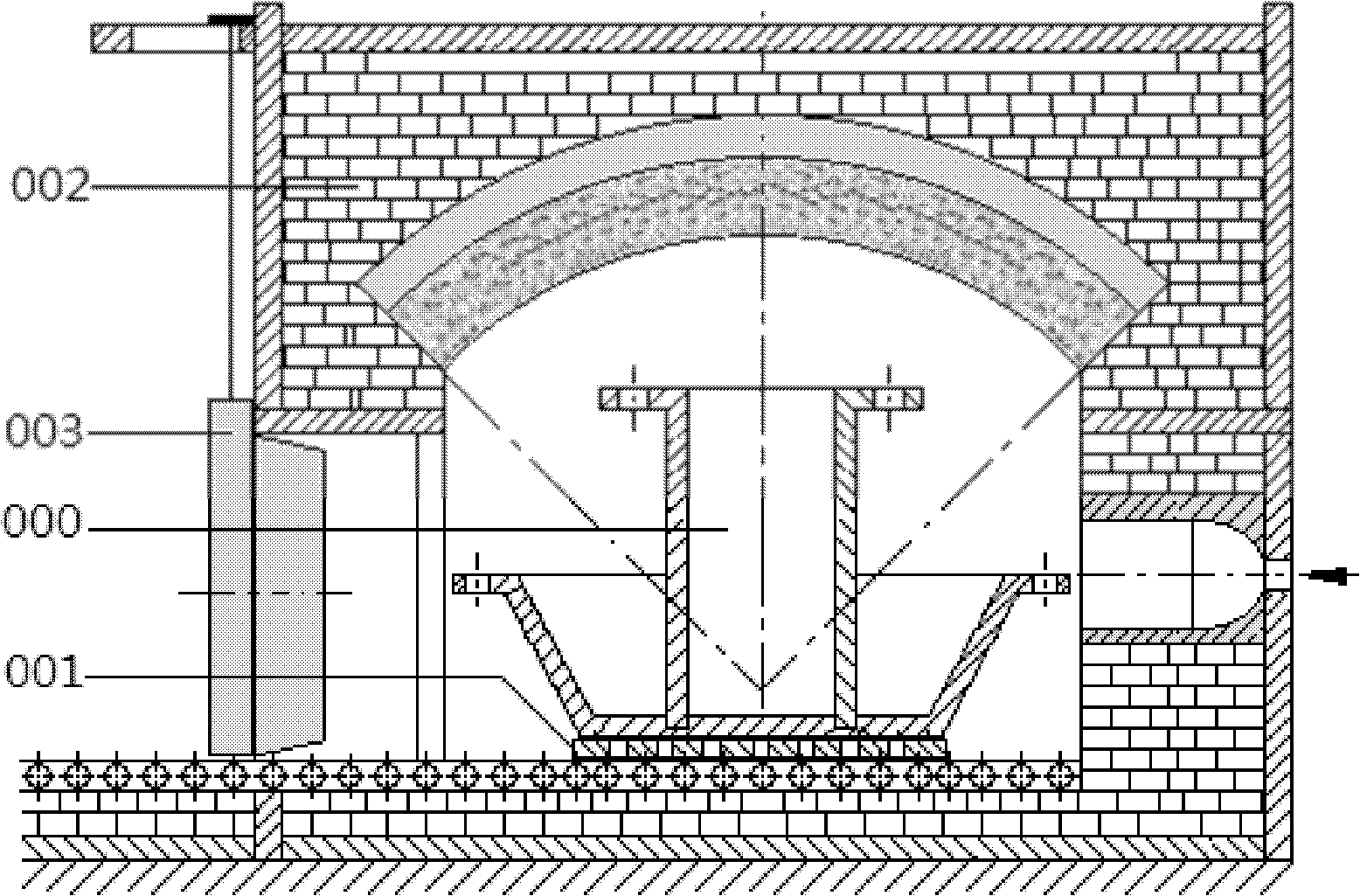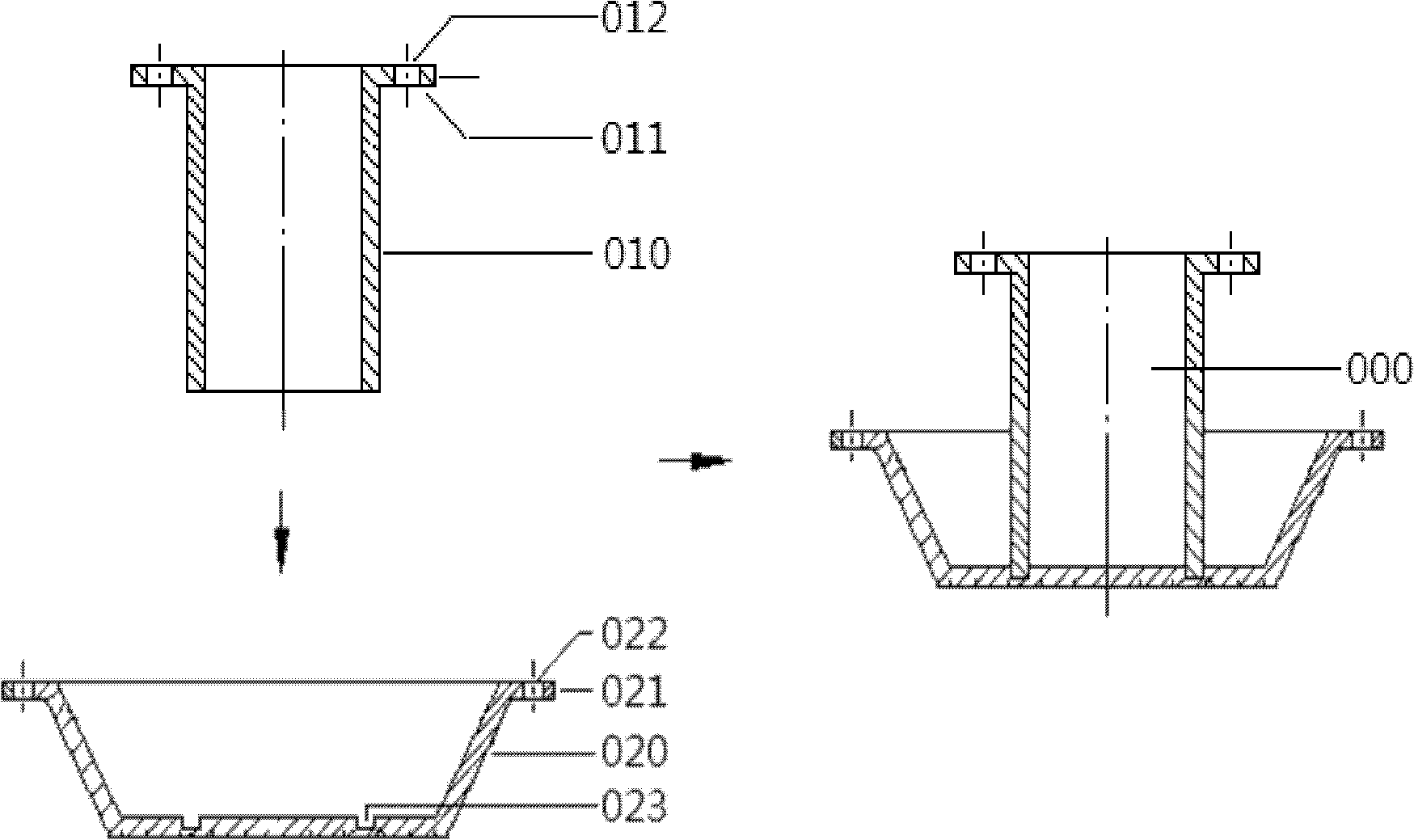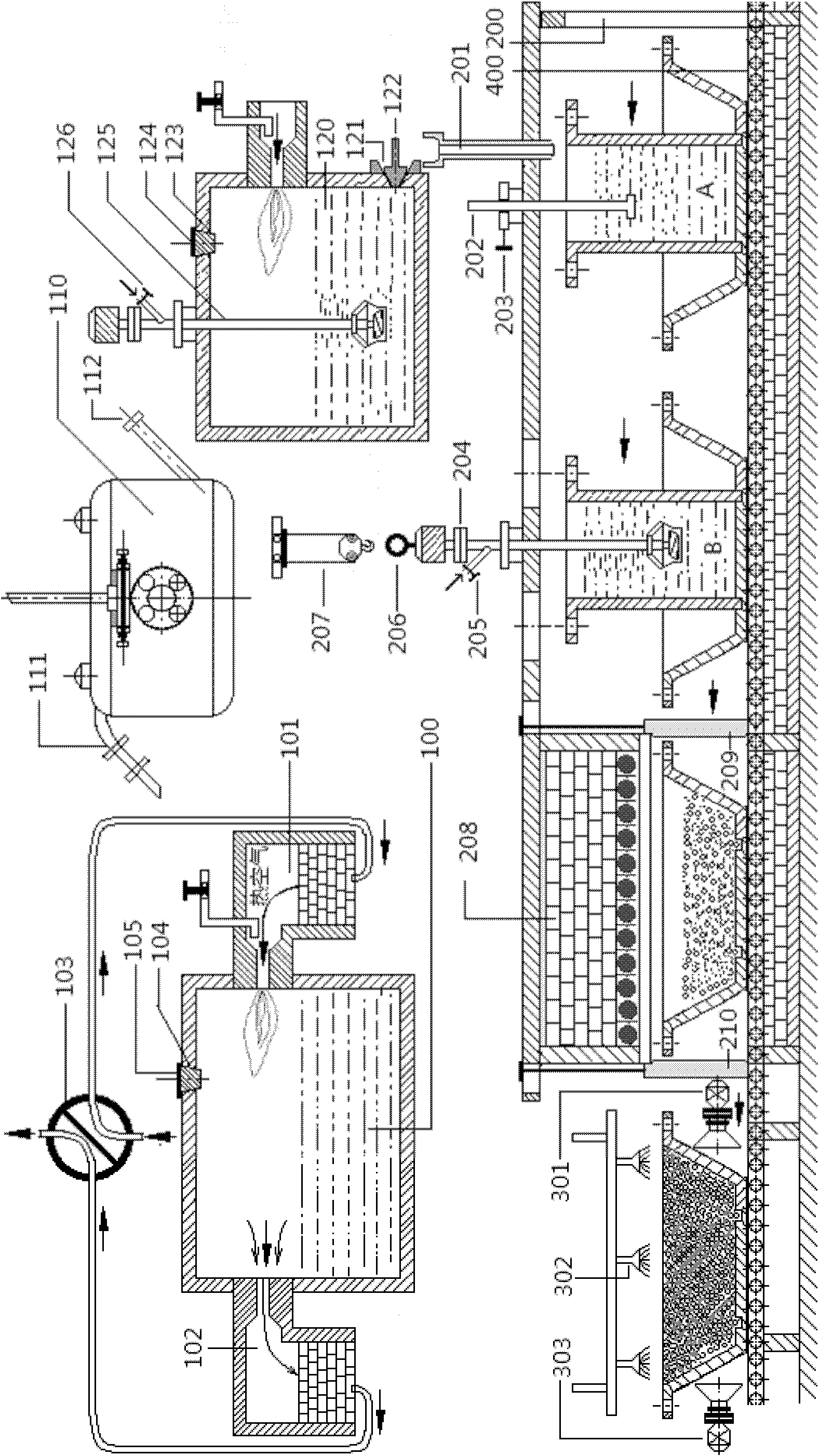Semi-continuous production process for closed-cell foamed aluminum
A closed-cell aluminum foam and production process technology is applied in the semi-continuous production process of closed-cell aluminum foam. Good volume uniformity, good performance consistency, and reduced production costs
- Summary
- Abstract
- Description
- Claims
- Application Information
AI Technical Summary
Problems solved by technology
Method used
Image
Examples
Embodiment 1
[0075] Example 1, using pure aluminum as a raw material to prepare a semi-continuous production process for closed-cell aluminum foam.
[0076] In this embodiment, calcium metal is used as the viscosity-increasing component, and titanium hydride is used as the blowing agent.
[0077] The specific implementation of this embodiment includes the following steps:
[0078] Step 1, assemble more than 000 composite molds. First place the asbestos rope soaked in high-temperature glue in the groove 023 on the bottom plate of the filling mold 020, then hoist the transition crucible 010 so that the bottom of the transition crucible 010 is embedded in the groove 023, and then, use high-temperature glue and asbestos powder The prepared paste fills the joint between the transition crucible 010 and the filling mold 020 to obtain a composite mold 000;
[0079] In the second step, preheat the composite mold 000, vacuum ladle 110, tundish 120 and foaming furnace 208. Their preheating temperat...
Embodiment 2
[0089] Example 2, using ZL102 as a raw material to prepare a semi-continuous production process of closed-cell aluminum foam.
[0090] In this embodiment, calcium metal is used as the viscosity-increasing component, and titanium hydride is used as the blowing agent.
[0091] The specific implementation of this embodiment is basically the same as that of Embodiment 1, the difference is the following process parameters.
[0092] ①. The preheating temperatures of composite mold 000, vacuum ladle 110, tundish 120 and foaming furnace 208 are 650°C, 900°C, 900°C, and 620°C respectively. + 10°C deviation.
[0093] ②. The melting temperature of ZL102 aluminum ingot is 780°C in the melting furnace 100, and the melt is kept warm at this temperature. The melting and holding temperature are allowed to be + 10°C deviation.
[0094] ③. The addition of the viscosity-increasing component calcium in the present embodiment is 3%, the addition of the blowing agent is 1.5%, and the time for st...
Embodiment 3
[0096] Example 3, a semi-continuous production process for preparing closed-cell aluminum foam with fly ash as the thickening component.
[0097] In this embodiment, fly ash is used as the viscosity-increasing component, zirconium hydride is used as the foaming agent, and pure aluminum is used as the raw material for production.
[0098] The specific implementation of this embodiment is basically the same as that of Embodiment 1, and the main difference with Embodiment 1 is as follows:
[0099] ①. The preheating temperature of the vacuum ladle 110 and the tundish 120 is 780°C, and the preheating temperature is allowed to be + 10°C deviation.
[0100] ②. The melting temperature of pure aluminum ingots is 800°C in the melting furnace 100°C, and the melt is kept warm at this temperature. The melting and holding temperatures are allowed to vary + 10°C deviation.
[0101] 3., the add-on amount of the thickening component fly ash of the present embodiment is 5%; The melt flows i...
PUM
| Property | Measurement | Unit |
|---|---|---|
| density | aaaaa | aaaaa |
| density | aaaaa | aaaaa |
Abstract
Description
Claims
Application Information
 Login to View More
Login to View More - R&D
- Intellectual Property
- Life Sciences
- Materials
- Tech Scout
- Unparalleled Data Quality
- Higher Quality Content
- 60% Fewer Hallucinations
Browse by: Latest US Patents, China's latest patents, Technical Efficacy Thesaurus, Application Domain, Technology Topic, Popular Technical Reports.
© 2025 PatSnap. All rights reserved.Legal|Privacy policy|Modern Slavery Act Transparency Statement|Sitemap|About US| Contact US: help@patsnap.com



